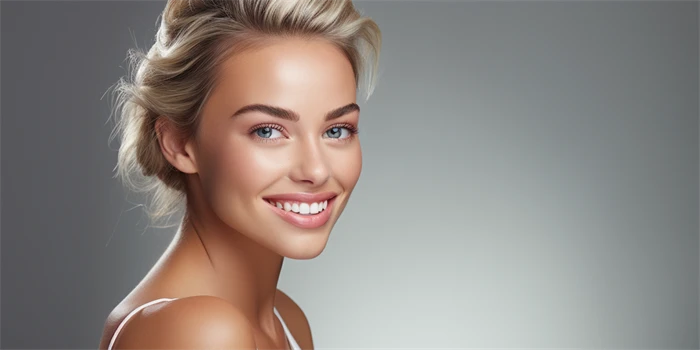Understanding the Safety of Chin Fillers in Ottawa
Chin fillers have become a popular cosmetic procedure in Ottawa, offering individuals a non-surgical option to enhance their facial features. However, the safety of these procedures is a paramount concern for both patients and practitioners. This article delves into various aspects of chin filler safety in Ottawa, providing a comprehensive overview to help potential patients make informed decisions.

1. Qualifications and Training of Practitioners
One of the critical factors in ensuring the safety of chin fillers is the qualifications and training of the practitioners administering the procedure. In Ottawa, it is essential to choose a practitioner who is licensed and certified by recognized medical boards. Dermatologists, plastic surgeons, and certified aestheticians are typically well-trained in administering dermal fillers. They undergo extensive training to understand facial anatomy, the selection of appropriate filler materials, and the techniques for safe injection. Patients should always inquire about the practitioner's credentials and experience specifically with chin fillers to ensure they are in capable hands.
2. Types of Fillers Used
The safety of chin fillers also depends on the type of filler material used. In Ottawa, the most commonly used fillers are hyaluronic acid-based products, such as Restylane and Juvederm. Hyaluronic acid is a natural substance found in the human body, making it a safe and biocompatible option. These fillers are FDA-approved and have a proven track record of safety and efficacy. It is crucial for patients to ensure that their practitioner uses only FDA-approved fillers to minimize the risk of complications.
3. Pre-Procedure Consultation and Assessment
A thorough pre-procedure consultation and assessment are vital to the safety of chin fillers. During this consultation, the practitioner will evaluate the patient's medical history, including any allergies, previous surgeries, and current medications. This assessment helps identify potential risks and ensures that the patient is a suitable candidate for the procedure. The practitioner will also discuss the patient's goals and expectations, providing a realistic overview of what can be achieved with chin fillers. This step is crucial in setting realistic expectations and ensuring patient satisfaction.
4. Procedure and Post-Treatment Care
The actual procedure of administering chin fillers is relatively quick and minimally invasive. However, the safety of the procedure also depends on the techniques used and the post-treatment care provided. Practitioners in Ottawa follow strict protocols to minimize the risk of infection, bruising, and other complications. They use sterile equipment and follow proper injection techniques. Post-treatment care instructions, such as avoiding strenuous activities and applying cold compresses, are provided to help the patient recover smoothly. Patients are also advised to monitor for any signs of complications and to contact their practitioner immediately if they arise.
5. Potential Risks and Complications
While chin fillers are generally safe, like any medical procedure, they carry some potential risks and complications. These can include infection, bruising, swelling, and asymmetry. In rare cases, there can be more severe complications, such as vascular occlusion, which can lead to tissue damage. However, these risks are minimized by choosing a qualified practitioner and following proper pre- and post-treatment protocols. Patients should be informed about these potential risks during the consultation, and practitioners should be prepared to manage any complications that may arise.
6. Long-Term Safety and Maintenance
The long-term safety and maintenance of chin fillers are also important considerations. Hyaluronic acid fillers are gradually absorbed by the body, which means that the results are not permanent. Patients may need follow-up treatments to maintain their desired appearance. Regular follow-ups with the practitioner are recommended to monitor the results and address any concerns. Practitioners in Ottawa emphasize the importance of maintaining realistic expectations and understanding that the effects of chin fillers are temporary.
FAQ
Q: How long do the results of chin fillers last?
A: The results of chin fillers typically last between 6 months to a year, depending on the type of filler used and the individual's metabolism.
Q: Are there any side effects of chin fillers?
A: Common side effects include temporary swelling, bruising, and redness at the injection site. These usually resolve within a few days.
Q: Can chin fillers be reversed if I am not satisfied with the results?
A: Yes, hyaluronic acid fillers can be reversed using an enzyme called hyaluronidase, which breaks down the filler material.
Q: Who should avoid getting chin fillers?
A: Individuals with certain medical conditions, allergies to filler materials, or those who are pregnant or breastfeeding should avoid chin fillers.
Q: How much does chin filler cost in Ottawa?
A: The cost of chin fillers can vary depending on the practitioner and the type of filler used. It is best to consult with a practitioner for a specific price quote.
In conclusion, chin fillers in Ottawa can be a safe and effective option for enhancing facial features when administered by qualified practitioners using FDA-approved materials. Patients should conduct thorough research, attend comprehensive consultations, and follow post-treatment care instructions to ensure the best possible outcomes.




